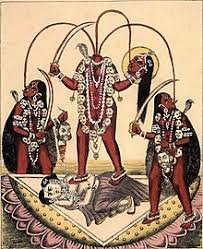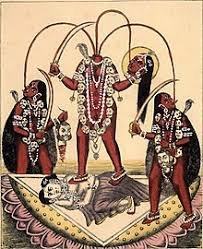
Sattva, Rajas, Tamas
The functions of sattva, rajas & tamas are to reveal, to make active & to suppress respectively.Rajas is dynamic; sattva & tamas are static principles. That is, sattva & tamas can neither reveal nor suppress without being first rendered active by rajas.
The functions of sattva, rajas & tamas are to reveal, to make active & to suppress respectively.Rajas is dynamic; sattva & tamas are static principles. That is, sattva & tamas can neither reveal nor suppress without being first rendered active by rajas.
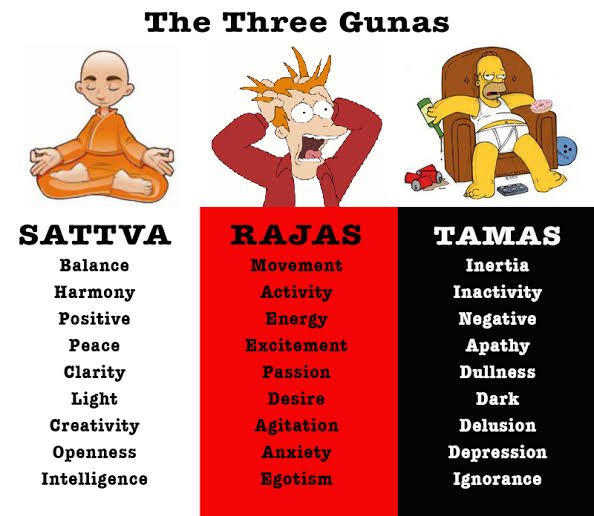
These gunas work by mutual suppression. The unrevealed Prakriti (avyakta-prakriti) or Devi is the state of stable equilibrium of these three. When this state is disturbed the manifested universe appears, in every object of which one or other of the three guna is in ascendant. 

Thus in Devas, as in those who approach the divya state, sattva predominates, and rajas and tamas are very much reduced. That is, their independent manifestation is reduced.
#SanatanDharma
#SanatanDharma

They are in one sense still there, for where rajas is not independently active it is operating on sattva to suppress tamas, which appears or disappears to the extent to which it is, or is not, subject to suppression by the revealing principle.
#SanatanDharma
#SanatanDharma

In the ordinary human jiva, as a class, tamas is less reduced than in case of the Deva, but highly reduced in comparison with animal jiva. Rajas has great independent activity, and sattva is also considerably active. In the animal creation sattva has considerably less activity. 
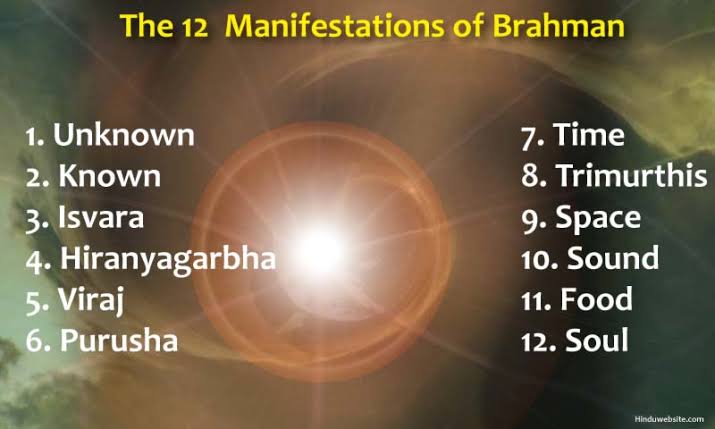
Rajas has less independent activity than in man, but is much more active than in the vegetable world. Tamas is greatly less preponderant than in the latter. In the vegetable kingdom tamas is more preponderant than in the case of animals, and both rajas and sattva less so. 

In the inorganic creation rajas makes tamas active to suppress both sattva and its own independent activity. It will thus be seen that the "upward" or revealing movement from the predominance of tamas to that of sattva represents the spiritual progress of the jivatma. 

Again, as between each member of these classes one or other of the three guna may be more or less in the ascendant. Thus, in one man as compared with another, the sattva guna may predominate, in which case his temperament is sattvik, or, as the Tantra calls it, divyabhava. 

In another the rajoguna may prevail, and in the third the tamoguna, in which case the individual is described as rajasik, or tamasik, or, to use Tantrik phraseology, he is said to belong to virabhava, or is a pashu respectively.
#SanatanDharma
#SanatanDharma

Again the vegetable creation is obviously less tamasik, and more rajasik and sattvik than the mineral, and even amongst these last there may be possibly some which are less tamasik than others. Etymologically, sattva is derived from "sat," that which is eternally existent. 

The eternally existent is also chit, pure intelligence or Spirit, ananda or Bliss. Sat is also used to denote the "good." And commonly, sattva guna is rendered "good quality." It is, however, "good" in the sense that it is productive of good and happiness.
#SanatanDharma
#SanatanDharma
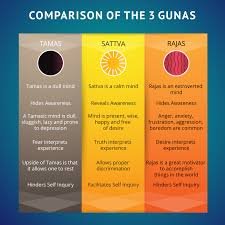
In such case, stress is on a necessary quality or effect (in ethical sense) of "sat" than its original meaning. In the primary sense sat is that which reveals. Nature is a revelation of spirit (sat). Where Nature is such a revelation of spirit there it manifests as sattva guna. 

Its the shining forth from under hidden spiritual substance (sat). And that equality in things that reveals it is sattva guna. So a pregnant woman is antahsattva, or instinct with sattva; she in whom sattva as jiva (whose characteristic guna is sattva) exists in a hidden state. 

Nature reveals, but is also a dense covering or veil of spirit, often so dense that ignorant can't discern that spirit. When Nature is a veil of spirit it appears as tamoguna. Here tamoguna is currently seen as representing inertia,because thats the effect of nature that veils. 

This quality when translated into moral sphere becomes ignorance or sloth. In a sense nature is a bridge between spirit that reveals & matter that veils. Nature is a bridge of descent from spirit to matter or ascent from matter to spirit, there it manifests itself as rajoguna. 

This is generally referred to as quality of activity; when transferred to sphere of feeling it shows up as passion. Each thing in Nature then contains that where spirit is manifested as sattvaguna; that by which spirit is covered by a veil of darkness or tamoguna, 
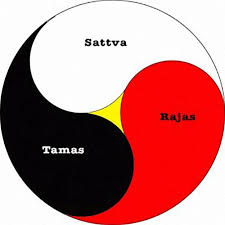
and that which is the vehicle for the descent into matter or the return to spirit or rajoguna. Thus sattva is the light of Nature, as tamas is its shade. Rajas is, as it were, a blended tint oscillating between each of the extremes constituted by the other guna. 

The object of Tantrik sadhana is to bring out and make preponderant the sattva guna by the aid of rajas, which operates to make the former guna active. The subtle body (lingasharira) of the jivatma comprises in it buddhi, ahangkara, manas,and the ten senses. 

This subtle body creates gross bodies as per spiritual state of the jivatma. Influenced by prarabdhda karmma, buddhi is tamasik, rajasik or sattvik. In first case jivatma assumes inanimate bodies; second, active passionate bodies; third, sattvik bodies of spiritual excellence, 

These range from man to Deva. Gross body is also trigunatmaka, conveys impressions to jivatma through subtle body & buddhi. When sattva is made active impressions of happiness result, and when rajas or tamas are active the impressions are those of sorrow and delusion. 

These impressions are the result of the predominance of these respective guna. The action of rajas on sattva produces happiness, as its own independent activity or operation on tamas produce sorrow and delusion respectively.
#SanatanaDharma

#SanatanaDharma


• • •
Missing some Tweet in this thread? You can try to
force a refresh


